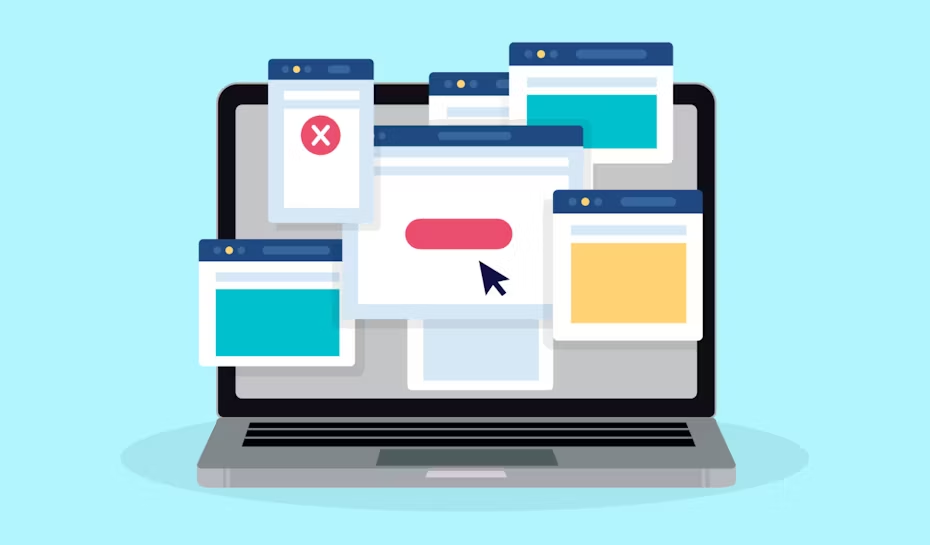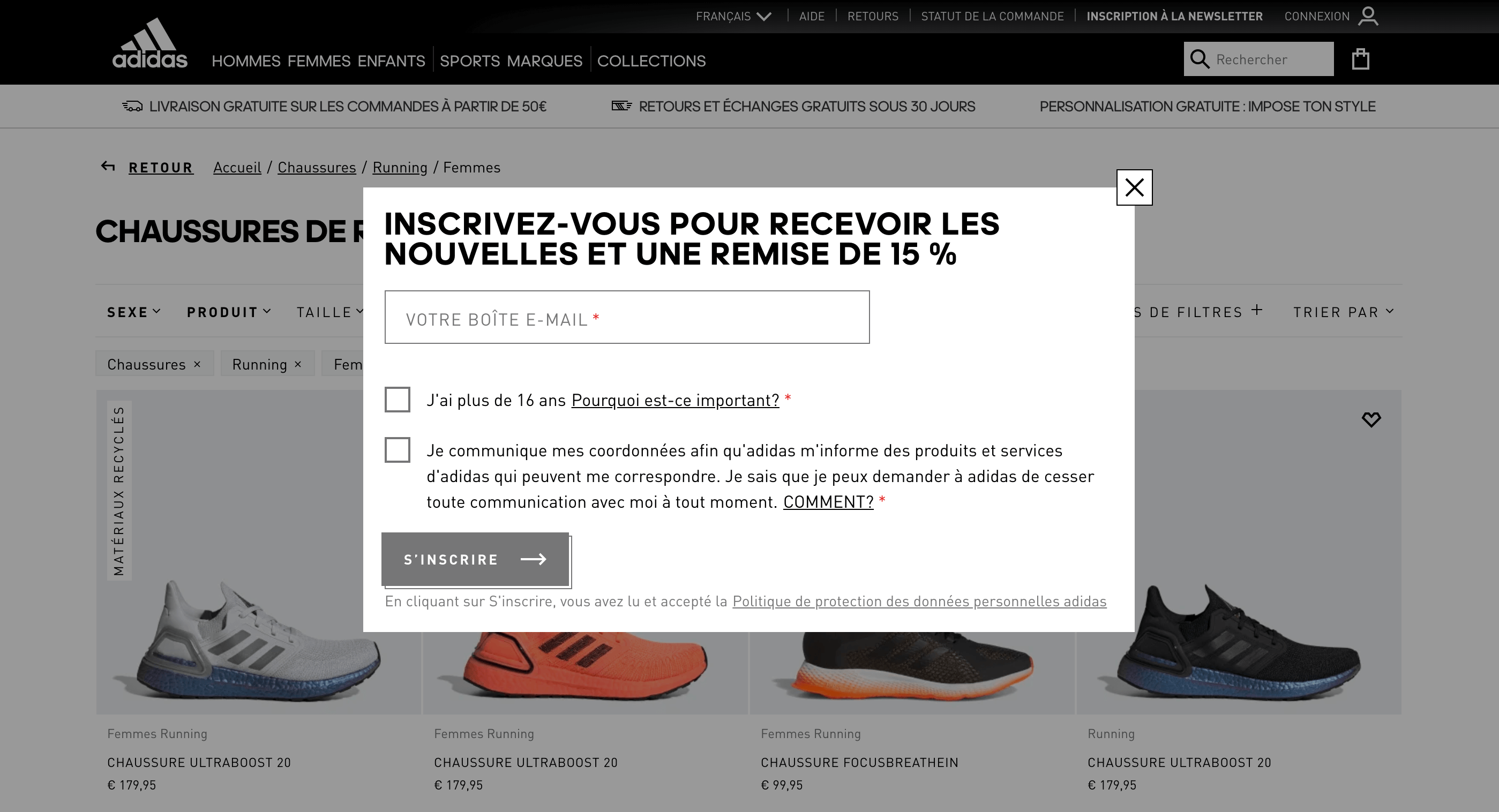
Why do visitors leave your site and how to retain them with pop-ups?
Why do visitors leave your site without engaging or converting? A high bounce rate can harm your performance, but there are solutions to captivate your audience before they go. Pop-ups, when well designed, turn out to be effective tools for capturing attention and encouraging interaction. In this article, discover the main reasons for departures and how to use pop-ups strategically to turn your visitors into loyal customers. Read on to optimize your site today!
The main reasons why visitors leave a website
Keeping visitors on a website remains a major challenge, often linked to user experience issues. Several recurring factors explain why users abandon a page without interacting or converting.

A poorly optimized user experience
A long loading time is one of the main reasons for departure. According to a Google study, 53% of visitors leave a site that takes more than three seconds to load. Additionally, confusing navigation or an unintuitive design discourages users. For example, if the menus are not clearly organized or if the shopping journey is complex, the visitor will abandon quickly.
Content that does not meet expectations
Visitors come to a site with specific expectations. If the content does not meet their needs or if the information they are looking for is difficult to find, they will leave. For instance, an e-commerce site with insufficient or unclear product descriptions risks losing potential customers.
Too many distractions or intrusive ads
Intrusive pop-ups or overly aggressive ads disrupt the browsing experience. A page overloaded with visual elements or autoplay videos can distract or annoy visitors, causing them to leave immediately.
The benefits of pop-ups to retain visitors
Pop-ups, often perceived as intrusive, can be highly effective when well designed and strategically placed. They offer a unique opportunity to capture the attention of visitors before they leave the site, while also improving engagement and conversions.

Capturing attention before they leave
Exit intent pop-ups are specially designed to intercept visitors about to leave a site. By detecting mouse movement towards the navigation bar or the closure of the tab, these pop-ups appear to offer an engaging deal or suggestion. For example, an e-commerce site may display an instant discount code to encourage completing a purchase. A study by Sumo shows that well-placed pop-ups can capture up to 10% of visitors who would otherwise leave the site.
Offering added value
Pop-ups should not just distract, but provide real value to the visitor. Offering exclusive content (ebook, guide, tutorial) or a promotional offer increases the chances of interaction. For example, a specialized blog may offer a free subscription to its newsletter in exchange for an email address, thereby building audience loyalty while enriching the site’s database.
Personalizing the user experience
Using behavioral data allows for displaying pop-ups tailored to the needs of visitors. For instance, a customer who has viewed a specific category of products may receive a targeted recommendation via a pop-up. According to HubSpot, personalized pop-ups achieve a click-through rate 42% higher than generic pop-ups, proving their ability to maximize engagement.
Best practices for effective pop-ups
For pop-ups to reach their full potential, they must be used strategically. Thoughtful design, precise timing, and engaging content are essential to ensure their effectiveness while maintaining a positive user experience.

Choose the right time to display a pop-up
Displaying pop-ups at the right moment is crucial to avoid irritating visitors. Exit intent pop-ups, for example, appear when the user is about to leave the page, thus maximizing retention chances. Conversely, a pop-up that appears immediately upon entering the site may be perceived as intrusive. A study by Sleeknote shows that well-timed pop-ups increase conversions by 30%.
Writing clear and engaging calls to action
An effective call to action (CTA) should prompt the visitor to act immediately. Using dynamic verbs such as “Get,” “Download,” or “Discover” enhances the message’s impact. For example, a pop-up offering a free trial could include a CTA like “Try for free today!” A concise, benefit-oriented text captures attention better and facilitates conversion.
Avoid harming the user experience
Pop-ups should be visually appealing and easy to close to avoid frustrating visitors. Simple designs, with colors consistent with the site’s graphic charter, enhance the perception of professionalism. Furthermore, limiting their frequency prevents an overload that could turn users away. For example, displaying a pop-up only once per session reduces the risk of annoyance while increasing interaction chances.
Pop-ups, when strategically used, transform hesitant visitors into engaged customers, while improving the user experience. By adopting best practices and tools like Poosh, you optimize your conversions while effectively retaining your audience. Take action today!